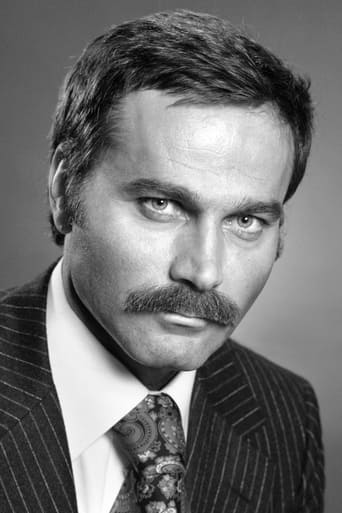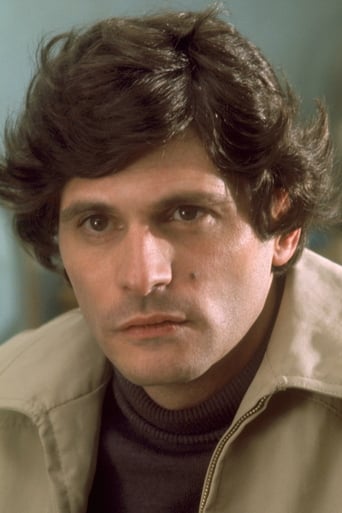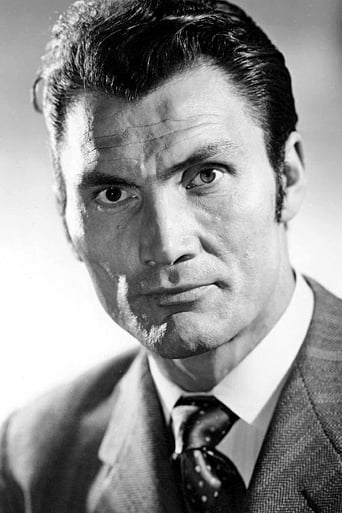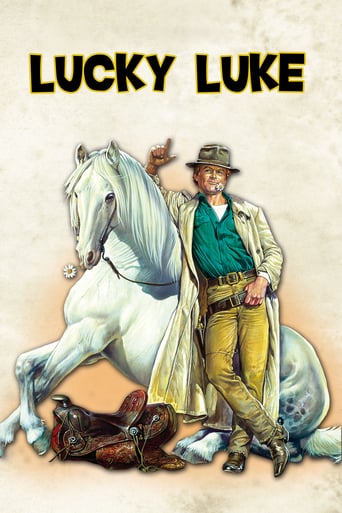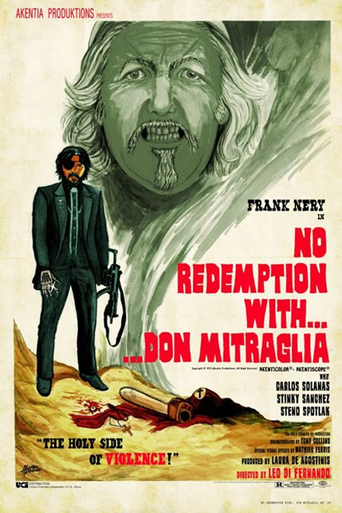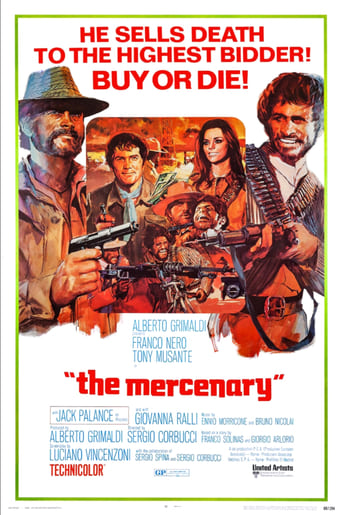
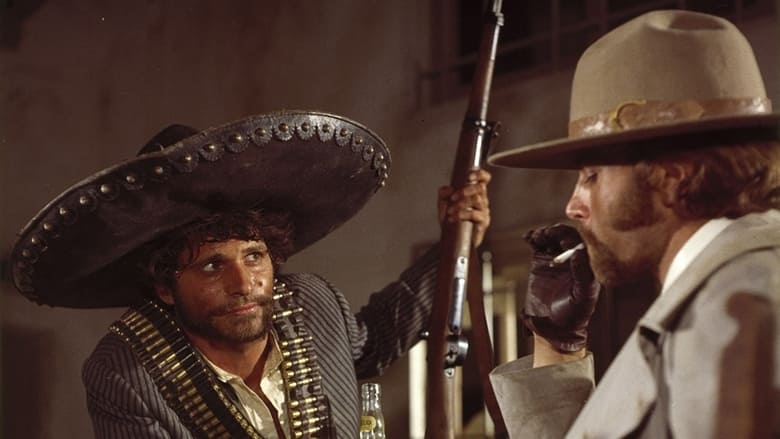
The Mercenary (1968)
While a Mexican revolutionary lies low as a U.S. rodeo clown, the cynical Polish mercenary who tutored the idealistic peasant tells how he and a dedicated female radical fought for the soul of the guerrilla general Paco, as Mexicans threw off repressive government and all-powerful landowners in the 1910s. Tracked by the vengeful Curly, Paco liberates villages, but is tempted by social banditry's treasures, which Kowalski revels in.
Watch Trailer
Cast


Similar titles
Reviews
Il mercenario (The Mercenary) is directed by Sergio Corbucci and Corbucci co-writes the screenplay with Luciano Vincenzoni, Sergio Spina and Adriano Bolzoni. It stars Franco Nero, Tony Musante, Jacl Palance and Giovanna Ralli. Music is by Ennio Morricone and Bruno Nicolai, with cinematography by Alejandro Ulloa.It's the Mexican Revolution and Sergei "Polack" Kowalski (Nero) is a gun for hire. Hired by revolutionary Paco Roman (Musante), Kowalski muses on all the scrapes they got into before bringing the story to a present day resolution...A Technicolor/Techniscope production, Corbucci's Zapata Western is a barnstormer full of political bents, wry humour and searing action. With beautiful Spanish vistas prominent and a musical score that's like a spicy jumping bean, story holds court from beginning to end. Essentially at it's heart it's a buddy buddy piece, though these buddies are hardly what you would call rock solid. Into the mix comes the gorgeous Ralli to add the sauce, whilst as Paco and Kowalski take on the Government and its Army, they also have to contend with Curly (Palance), a camp sadistic dandy with revenge on his mind.Corbucci has a great eye for action, there's reams of gun fire, with machine guns, artillery and even a plane laying waste to bone and buildings, and usually the cruelty and carnage on show is done with a glint in the eye (milk and dice drink/grenade in mouth), and splendidly so. It's so deft that often a scene is being played out and on the side there is an execution going on, casually unfurled as matter of fact. There's also religious fervour cheekily in place, with Paco's army the Apostles and Polack their Jesus, so it's no surprise that religious imagery is placed within.Corbucci also likes to let his camera talk. Standard Pasta Western traits operate, such as close ups of the eyes, roving tracking shots, angled up tilts and glides. He also gets lucky with the weather for one shot, capturing a natural rainbow amid some more furious character action. Cast are doing sterling work. Nero is cool supreme, with awesome face fuzz and casually striking matches on various things, Nero proves to be a fine action hero and it's so easy to buy into his character. Musante is also excellent, giving Paco an earnestness that's beguiling, he's a lovable rogue, at times bumbling but utterly heroic within the revolutionary arc. While Palance, though not in it as much as you would think, is giving Curly a most intriguing persona, confusing sexuality and religious alibi.From a bullring circus opening featuring midget clowns, to a glorious clifftop turkey shoot finale, there is nary a dull moment in the pic. Top dollar Pasta Oater. 8.5/10
"Sergei Kowalski" (Franco Nero) is a mercenary who wanders around Mexico selling his services to anybody who can afford him. In one specific case the owner of a silver mine is having problems with some bandits and hires Sergei to ride to the mine and bring a shipment of silver to the United States. However, when Sergei gets there he is taken prisoner by the bandits and discovers that the silver cannot be extracted because the tunnels have collapsed. About this same time the Mexican army arrives with the intent upon retaking the silver mine from the bandits. Heavy fighting ensues and this prompts the leader of the bandits, "Paco Roman" (Tony Musante) to offer Sergei a job in helping them in their fight against the army. Since the bandits have money Sergei agrees. Soon one thing leads to another and Paco gradually morphs into a revolutionary due mainly to the influence of an attractive woman named "Columba" (Giovanni Ralli) who they meet during a successful bank robbery. What follows is a funny yet bizarre tale set in a "spaghetti-western" environment. Now, for the most part I liked the performance of Franco Nero and I certainly didn't mind the presence of Giovanni Ralli. But some of the scenes were simply too unrealistic and lacked any noticeable depth. Along with that I thought the wig that Jack Palance (as "Curly") wore made him look totally ridiculous. In any case, I rate this movie as about average.
Two years after their success with Django, director Sergio Corbucci and lead actor Franco Nero teamed up again for this western which, to the best of my knowledge (and surprise) was never released with an alternate title including the word 'Django'. Rather than focusing on a coffin-towing gunslinger, this one features a story taking place around the time of the Mexican revolution. The film gets off to a good start with a great score conducted by Ennio Morricone. From there we are introduced to Franco Nero's character Sergei Kowalski; a Polish gunslinger, only out to better himself; and, it has to be said, is a little hard to understand at first. He hooks up with a Mexican revolutionary named Paco, and together they strike a bargain; The Pole will aide Paco in his revolution, for a slice of any profits that the pair and their army 'liberate' from the Mexican towns and villages. Naturally, it's not long before Paco is attracting attention from the Government; and the pair's different objectives soon lead to fights amongst themselves.This film works principally thanks to a good and interesting story, as well as the characters themselves which are intriguing and work well together. Franco Nero, of course, is the main star of the show and shows his versatility somewhat with the role. Of course, he played gunslingers in plenty of films; but here he manages to convince that he's Polish (although the accent does take a little getting used to). He receives good feedback from Tony Musante (who was the lead actor in Dario Argento's The Bird with the Crystal Plumage) and the pair have a good, if somewhat awkward, chemistry together. There's also a 'guest star' role for Jack Palance who plays a rival gunslinger. The film is not all that well known today, and that is probably because it is rather derivative of other and better known westerns; most obvious is the climatic shootout sequence towards the end which directly 'borrows' from Sergio Leone's masterpiece The Good, The Bad and The Ugly. Still, in spite of this; The Mercenary is a very well made and entertaining spaghetti western that should please all fans of the genre.
"Django" director Sergio Corbucci's Spaghetti western "The Mercenary" about an itinerant Polish pistolero Sergei Kowalski (Franco Nero of "Camelot") in Mexico at the turn of the century who takes a poor ignorant peasant (Tomas Musante of "The Bird with the Crystal Plumage") under his gun arm and elevates him to the status of hero of the Mexican revolution beat Sergio Leone's "Duck, You Sucker" by three years. In "Duck, You Sucker," an Irish revolutionary (James Coburn) took a penniless peasant (Rod Steiger) and elevated him to the status of Pancho Villa during the Mexican revolution. Indeed, the basic plots of "The Mercenary" and "Duck, You Sucker" resemble each other closely, except the characters and the endings differ drastically. The peasant here in "The Mercenary" is Paco Roman, a young, wifeless, childless, blue-collar laborer toiling in the mines of a wealthy aristocrat with a taste for opera. In "Duck, You Sucker," the peasant was much older, with a brood of trigger-happy sons, and a passion for thievery. In retrospect, the similarity between "The Mercenary" and "Duck, You Sucker" shouldn't seem too surprisingly when you consider that the same scenarist, Luciano Vincenzoniwho penned "Death Rides A Horse," "For A Few Dollars More," and "The Good, the Bad, and the Ugly"wrote both "The Mercenary" and "Duck, You Sucker." "The Mercenary" was Corbucci's first Mexican revolutionary western that he would follow up with "Companeros" starring Franco Nero as a Swedish arms dealer, Tomas Milian as the Mexican peasant, and Jack Palance as the villain."The Mercenary" opens in an arena with clowns simulating a bullfight. The main clown is really Paco; he is on the run from wealthy mine owner Alfonso García (Eduardo Fajardo of "Bad Man's River") and a deadly but dandified gambler Curly (Jack Palance) who is in league with Garcia. The Polish gunman Kowalski (Nero) sits in the stands and watches Paco until the time for the sundown comes. At that point, Corbucci and his multitude of writersamong them Franco Solinas of "A Bullet for the General" and Vincenzoniflash back to the first meeting between our heroes who later become fast friends. Two Mexican mine owner pay Kowalski to get their silver. Curly follows them after he sees them talking to Kowalski. Curly is deeply interested in them because he had to have one of his henchmen, Studs (Franco Ressel of "Sabata"), killed for trying to kill Kowalski. You see, Kowalski caught Studs gambling with loaded dice and made him swallow the dice with a glass of milk.Anyway, Curly kills the two Mexicans and rides out to get the silver and Kowalski. Meanwhile, at the mine, Paco and his fellow minersexploited at poverty wagesdine on execrable food and Paco discovers a lizard in his food. Everybody has a good laugh about the 'meat' in the grub. Later, in Garcia's office, the mine owner comes face-to-face with Paco holding a pig on a platter with a pistol sticking out of its mouth. Paco hand feeds Garcia the lizard and the two are enemies for life. When Kowalski shows up to pick up the money, he finds himself surrounded by Paco and his men. They are going to kill the Polish gunman until the Mexican army, with a vengeful Garcia in the ranks, intervenes with an artillery barrage. Vincenzoni wrote a similar scene in Leone's "The Good, the Bad, and the Ugly" as Tuco was about to hang Blonde from a hotel rafter. In the middle of all the shooting, the wealthy Paco explains that the silver can never be gotten to but he has fistfuls of paper money. He pays Kowalski to teach him how to operate a machine gun and the two become revolutionaries.Kowalski takes his hard earned money and leaves Paco, only to be trapped in the desert by Curly and his gunmen. This time Paco intervenes in the showdown between Kowalski and Curly and kills all of Curly's men and forces Curly to walk away without a stitch of clothing on in humiliation. Now, Curly has it in for Paco as well as the Polish soldier-of-fortune. Essentially, Kowalski teaches Paco how to run a revolution until an interfering woman Columba (Giovanna Ralli of "Cannon for Cordoba") joins them and turns Paco against his pal. As they make more money, Kowalski's demands become outrageous. He prefers to be paid in coin and he forces Paco's army to stop in the middle of the desert so that he can improvise a shower to cool himself off. No sooner have Paco and Columba wed and left Kowalski tied up in a stable than Garcia and Curly arrive, again with the Mexican army and a bi-plane that drops bombs.Spaghetti director Sergio Corbucci wrote and directed twice as many westerns as Sergio Leone. Corbucci lacked Leone's flamboyant style and his lucky break in establishing the Italian western. Nevertheless, he was his equal when it came to staging gunfights and helming snappy action stories. Franco Nero became his Clint Eastwood and Corbucci gained fame as Burt Reynolds called him 'the other Sergio' for his diverse oaters. Corbucci bucked the 'southwest' look of Spaghetti westerns with his oddball oater "The Great Silence" and his muddy western "Django" where the hero dragged around a coffin with a machine gun stashed in it. Corbucci maintains a furious pace throughout "The Mercenary," even though it starts up with a flashback and sacrifices some suspensebecause you know the principals cannot die until the flashback ends. Predictably, the body count is as high as the film's cynicism. At one point, Curly jams a hand grenade into a revolutionary soldier's mouth and blows him up. However, Corbucci shows uncharacteristic flair when he stages a killing and a torture scene and declines to show the violence in each scene. In one scene, a thug batters the truth out of an unwilling victim while we watch Curly ride around in a circle. This kind of subtlety is very unusual for a Spaghetti western.


